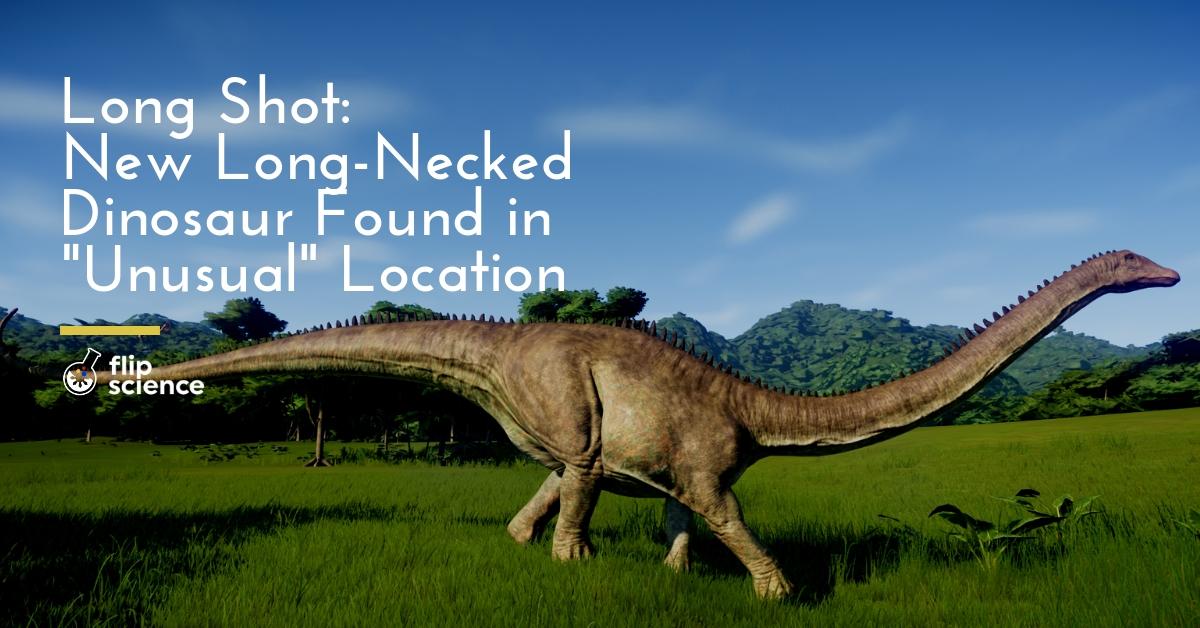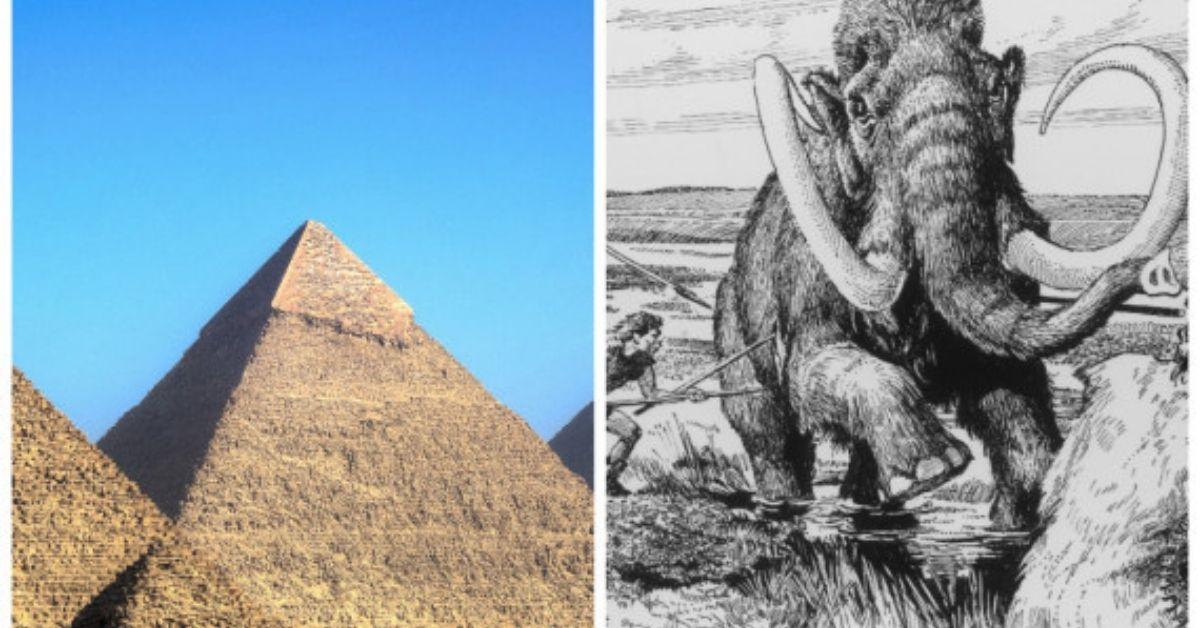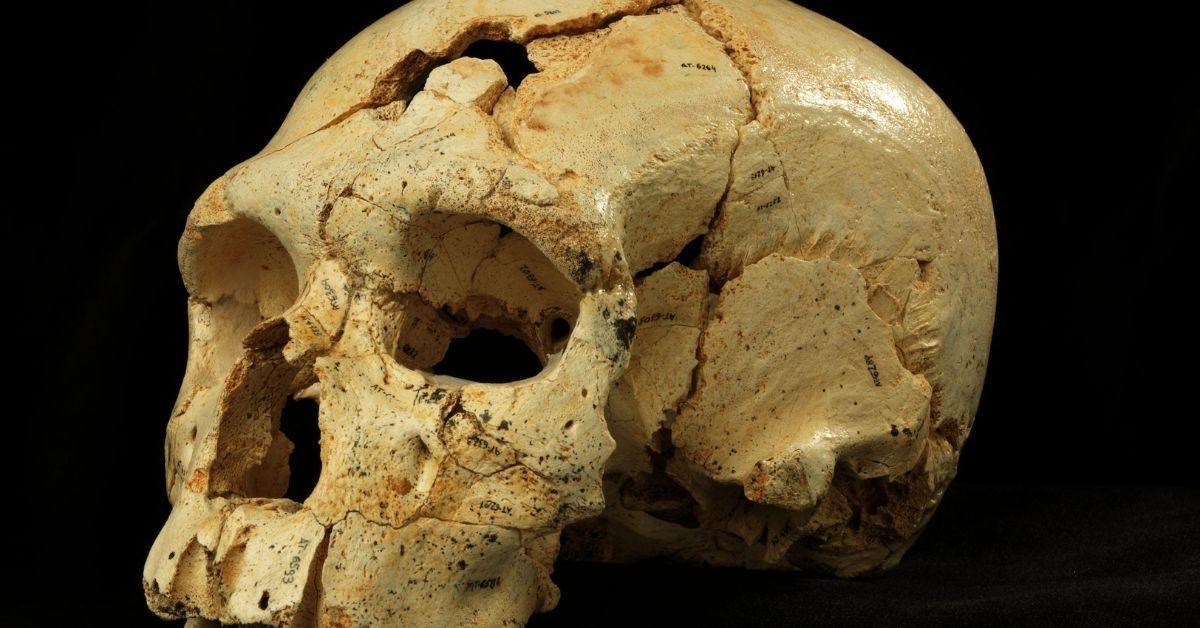Paleontologists found fossils of Lavocatisaurus agrioensis in a place that, 110 million years ago, was likely too dry for the dinosaur to thrive in.
Have you ever looked at something and wondered how it got there?
Paleontologists from Spain and Argentina unearthed fossils from a long-necked dinosaur species that lived in the Late Cretaceous era. Interestingly, they dug out the sauropod fossils from a location where no one would have expected to find them.
Surprise, a sauropod!
The newly discovered species is part of the Rebbachisauridae family, which falls under the Diplodocimorpha clade of sauropods.
The scientists named it Lavocatisaurus agrioensis in honor of French paleontologist René Lavocat (who found the first known rebbachisaurids in the Sahara desert in 1950) and Agrio del Medio in Neuquén, Argentina (where the species were found).

Artist’s rendition of Lavocatisaurus agrioensis. Image: Gabriel Lio
Reaching up to 34 meters in length and weighing up to 120 tons, sauropods were definitely giants among giants.
This makes Lavocatisaurus agrioensis‘ discovery even more peculiar, as the Agrio del Medio site was supposedly a dry, barren desert during the sauropod’s time.
“While one can imagine that this group of sauropods could have adapted to move in more arid environments, with little vegetation, little humidity and little water, it’s an area in which you wouldn’t be looking for fossils,” according to Jose Luis Carballido, a researcher at the Egidio Feruglio museum and study co-author.
Group effort
Another interesting aspect of the discovery: the fossils weren’t from just one Lavocatisaurus, but three.
“We found most of the cranial bones: the snout, the jaws, a lot of teeth, also the bones that define the eye sockets for example and, in that way, we were able to create an almost complete reconstruction,” explained Carballido. They also found fossils of the dinosaur’s neck, back, and tail.
“Not only is this the discovery of a new species in an area where you wouldn’t expect to find fossils, but the skull is almost complete.”
The specimens came from an adult approximately 12 meters long and two juveniles roughly six to seven meters in length. However, it is not possible to determine the relationship between the three dinosaurs.
According to the researchers, this marks the first instance that a group of rebbachisaurs were unearthed together.
“This discovery of an adult and two juveniles also signifies the first record of a group displacement among the rebbachisaurus dinosaurs,” stated Zaragoza University’s Jose Ignacio Canudo, the lead author of the study.
The researchers published their findings in the scientific journal Acta Palaeontologica Polonica.
Cover photo: Game render of Diplodocus from ‘Jurassic World Evolution’ (Frontier Developments, 2018).
References
- http://www.app.pan.pl/archive/published/app63/app005242018.pdf
- http://www.dicyt.com/news/scientists-discover-a-new-species-of-dinosaur-110-million-years-old-in-argentina
- https://www.afp.com/en/news/15/paleontologists-discover-new-sauropod-species-argentina-doc-1aj16q2
- https://www.inquisitr.com/5146139/new-dinosaur-species-discovered-in-unusual-argentine-location/
Author: Mikael Angelo Francisco
Bitten by the science writing bug, Mikael has years of writing and editorial experience under his belt. As the editor-in-chief of FlipScience, Mikael has sworn to help make science more fun and interesting for geeky readers and casual audiences alike.







